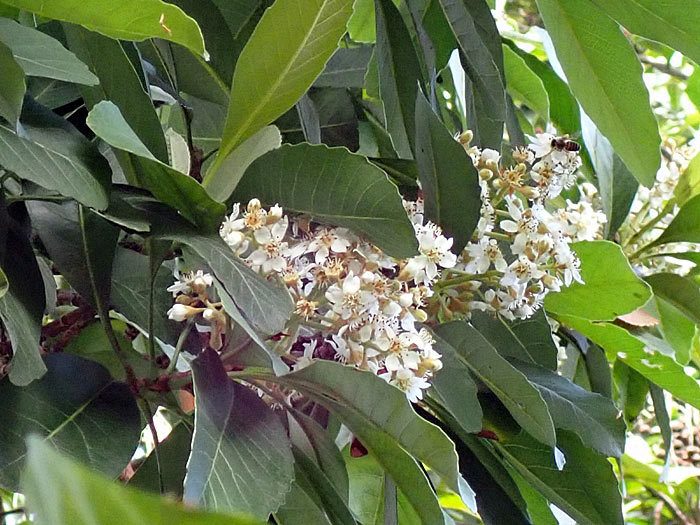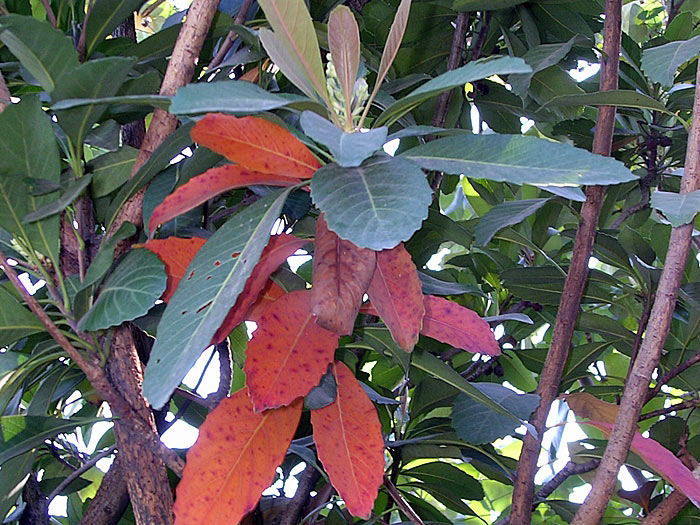Eriobotrya deflexa
There is a sweet and juicy fruit called loquat in Taiwan, which has the appearance similar to the musical instrument lute. The harvest season is around March to April every year. Xinshe District and Taiping District in Taichung City where the museum is located are both famous production areas, and Toubiankeng in Taiping District is even considered to be the origin of professional loquat cultivation in Taiwan. Most of the loquats currently cultivated are the combination of varieties introduced from Japan during the Japanese colonial period and from China in the early years.
The bronze loquat is endemic to Taiwan, naturally distributed from the foothills of the coastal mountains to the mid-altitude mountainous areas of the island. It prefers a warm, humid and sunny environment, and is resistant to strong winds and drought, with a wide range of variations in the size and shape of the leaves, and a slight difference in the time of blooming. Among the bronze loquats planted in the Botanical Garden, the leaves in the Coral Atoll Area are smaller with rounded and blunt tips, and bloom in January every year, while the leaves in the Northern Lowland Area are larger with sharp tips, so some people will categorize them differently.
The white flowers of the bronze loquat are delicate and beautiful with a strong fragrance, and are an important source of nectar for wildlife when they bloom in winter and spring. The fruit ripens in summer and resembles a loquat in appearance, but is small in size, with little flesh, coarse fiber, and a large seed inside the fruit. The ripe fruit is juicy and sweet, and although it is eaten by indigenous peoples all over Taiwan, it is not a major target of gathering. The leaves change to a bright red color before they age and fall, which is even brighter when set off by other dark green leaves. With the characteristic and its tall shape, it can be cultivated as a landscape tree in gardens, and is also an excellent bird attractant. The wood is hard and can be used to make various kinds of utensils.

